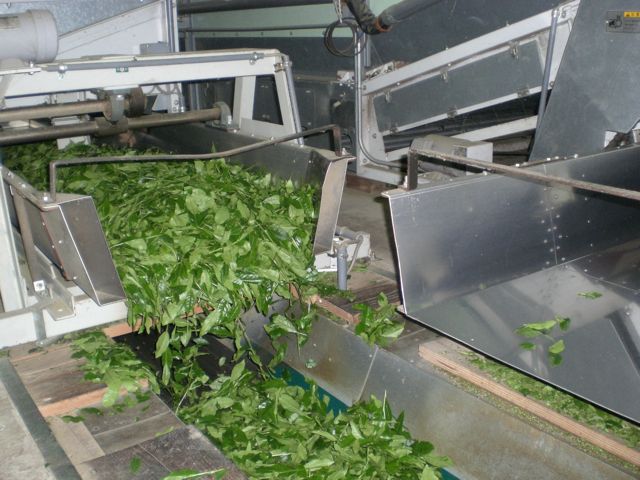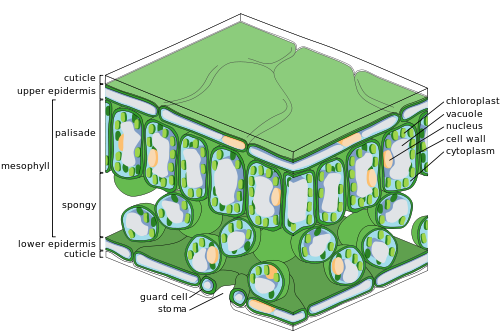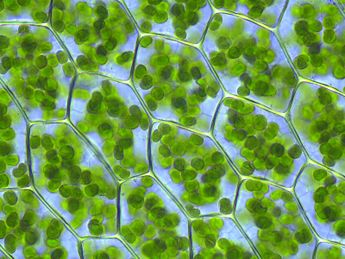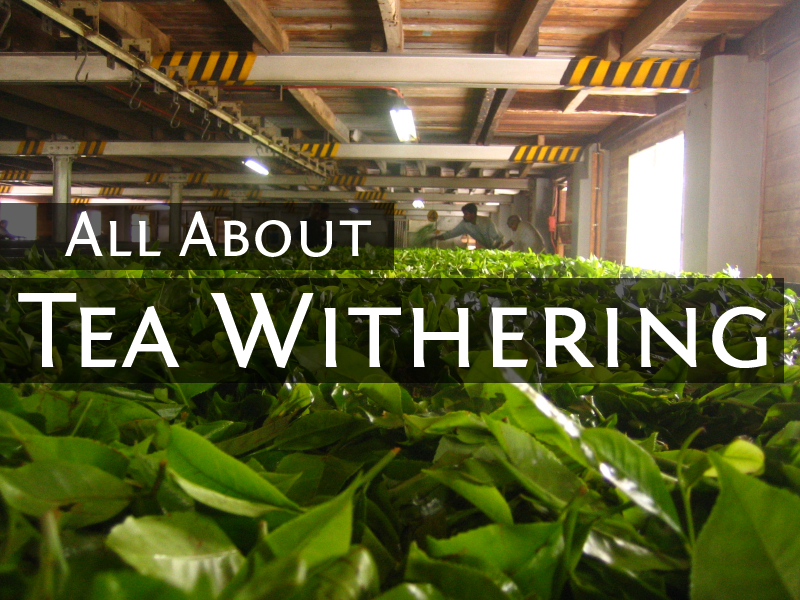
All About Tea Withering (Original Image: Tea Factory by Aidan Jones, on Flickr)
Withering, Wilting, Whatever It Is—Let’s Talk About It
In which I explore tea withering: what it does, the different types of wither, and how they’re affected by you the teawright.
The ancient Roman historian Titus Livius, nicknamed Livy, wrote in his introduction to The History of Rome,
“Such traditions as belong to the time before…and are rather adorned with poetic legends than based upon trustworthy historical proofs, I purpose neither to affirm nor to refute. It is the privilege of antiquity to mingle divine things with human, and so to add dignity to beginnings”
While he described the mythological origins of Rome, his indulgence to ancient legend is one I choose to practice here. It lends dignity and beauty to origins, and Tea rightfully deserves this spot.
The craft of tea-making evolved through the centuries, and continues to evolve today. Its origins obscured through the mists of time, history and legend. It began with an ancient emperor’s curiosity over the pleasant fragrance of a simple boiling of fallen leaves. It progressed through the centuries into a finely honed process to emulate the graceful decomposition of leaves. We wanted the benefit of the fallen & aged leaf without losing it to the Earth.
The first step in this “decomposition” is the first step of tea craft when creating black & oolong teas. This is the study of the Wither.
Why Wither Tea Leaves
Traditionally, there are a bunch of reasons why fresh plucked tea leaves are withered. Most of these reasons deal with the machinery & techniques involved in the manufacturing process. Let’s take a quick look at these.
Mechanically, withering is important because it reduces moisture content and makes the leaves flaccid. These two attributes assist in the rolling and drying process. They make the leaves easier to deal with. This then allows more consistent processing, and generally keeps the leaves from gunking up the machinery. For instance, many factories use a fluidized (vibrating) bedplate in their driers, passing the leaves through different drying regions of the machinery. Too wet a leaf, and it balls up and sticks to the machinery, gumming up the works. The same goes with factory rollers, with too-wet a leaf clogging the rotorvanes.
Also mechanically, but not so much in terms of machinery, the reduction of moisture is used in large-scale fermenting. If there’s too much moisture, the dhool (fermenting tea leaves) won’t be properly aerated, and temperature control is more difficult. However, there’s a fine line because too much moisture loss and the enzymes in the leaf won’t properly ferment the leaves. This brings us along to the next topic…
What Happens During a Wither
A handful of changes occur in tea leaves during the wither process. All physiological / biochemical. All important. Let’s begin by looking at the changes mentioned in the above section that assist the mechanical-side of things when it comes to tea manufacturing.
The Tea Leaves Go Limp
After tea leaves are plucked, over the course of withering they become more flaccid. This softening up of the leaves occurs because the leaf membranes open up. This opening of the membranes makes them more permeable, but also weakens the leaf structure making them go limp.
Moisture Loss in the Tea Leaves
This cell permeability is important for a couple reasons. To begin with, it assists in moisture-loss. A big component to tea manufacturing is to ultimately reduce the moisture content of tea leaves down to about 4%. This moisture loss, is important in terms of the smooth operation of the tea manufacturing equipment (as mentioned above), but also for the shelf-stability of the final “made” tea.
Oxygen Absorption Begins
Another important reason for cell permeability is because it helps the internal cell workings begin absorbing oxygen. If you recall in my previous article on tannins in black tea, the fermentation process is actually an enzyme-assisted oxidation process—much like how bruised apples & bananas will brown. This oxygen absorption is very critical to the later fermentation process. It’s not used immediately because the enzymes that assist fermentation have not yet been activated by the full release of tea tannins.
Biochemical Changes
Biochemically a lot is going on inside those tea leaves, and it begins during the wither. These changes include enzyme activity, the coming and going of volatile compounds, and changes in organic acids & sugars. Furthermore caffeine content begins to increase, while we see a decrease in chlorophyll, lipids & fatty acids, and carotenoids. And of course we see the breakdown of amino acids and proteins.
If you recall our previous article on black tea tannins, you’ll remember that withering is an important step. Enzyme activity begins oxidizing the fresh leaf catechins into Theaflavins and Thearubigins. The main culprits performing this activity are the Polyphenol Oxidase, and Peroxidase enzymes.
During withering, we also see a breakdown of more complex compounds into their simpler components. This is when proteins will break into their constituent amino acids. This is also when complex carbohydrates break into their simpler sugars. Many of the amino acids will combine with some of these sugars to produce volatile compounds important to the flavor of black and oolong teas.
Speaking of volatile compounds, we see the same from lipids and fatty acids. These compounds break down during the withering process as well. They go on to create new volatile compounds, however they’re not as beneficial to the crafting of black and oolong teas. They are responsible for the grassy odor you can detect during withering. This odor eventually goes away as you create your “made” tea.
Carotenoids & chlorophyll are both pigments in the leaf, but their breakdowns contribute in very different ways. While both compounds assist in photosynthesis, carotenoids are yellowish in color. When they break down, they contribute to the increasing volatile compounds.
Chlorophyll is greenish in color and its breakdown is important in two ways. If there is too much chlorophyll by the end of the tea-making process, the result is a tea with grassy overtones. If you’re making a black tea, this isn’t desirable. For green tea, it’s a different story (and in fact, some green tea makers will promote the increase of chlorophyll in their plants. Think Matcha). The second way chlorophyll’s breakdown contributes to tea is providing the black color of the leaves. Some of this breakdown is aided by the later drying process as well.
Finally, we can’t forget our friend caffeine. Caffeine occurs naturally in all tea. During the withering process, however, its levels increase within the leaf. The more effective a wither, the more caffeine content in the leaf. Additionally, the more caffeine content, the better the “creaming” property of your final tea.
Different Types of Withering
Before you began reading this article, you likely thought that withering is withering is withering. All withers are the same—at least that’s what I used to think long ago. However, withering is an art, and there are different ways to practice it. Generally, there are 5 different withers that can be performed on tea leaves.
Physical Withers, aka Artificial Withers, are performed to reduce moisture levels quickly. In many factories it occurs by laying the leaves in a trough and gently blowing air through the leaves. The trough will have a mesh bottom to allow this. The air is left at an ambient temperature when it is warm or it will be heated somewhat. Ultimately, the temperatures used, and the amount of time given will depend on humidity levels. It can last from 4 hours in great conditions to 18 hours in humid weather. If it’s very warm, sometimes this wither has been reported to complete within 15 minutes. These numbers, however, are for industrial scales.
Chemical Withers, aka Storage withers, is fairly well understood as well, but is primarily used to store leaf for factory scheduling. In this type of wither, air is occasionally blown through the leaf with the sole purpose of keeping them cool. Large batches of harvested leaves will eventually warm up on their own due to internal biochemical changes. This simply manages that temperature change. Despite the name, no chemicals are added to the leaf. Instead it refers to the chemical changes that are naturally occurring in the leaf themselves. Since this method is used to help store fresh leaf, it is also known as storage wither.
Normal Wither is essentially a prolonged physical wither. It’s performed without heated aid (except on humid or rainy days), and is generally done over 12-24 hours. It effectively withers the leaf through a combination of physical and storage techniques.
Two-Stage Wither is done when the leaves first undergo a storage wither, followed by a subsequent physical wither. Sometimes additional heat is used during this particular method and it reduces the withering time significantly. It seems ideal for factory settings where scheduling is important, capacity is limited and excess harvest needs to be stored for a time.
Finally there’s the Nil Wither. Basically, no withering is done at all.
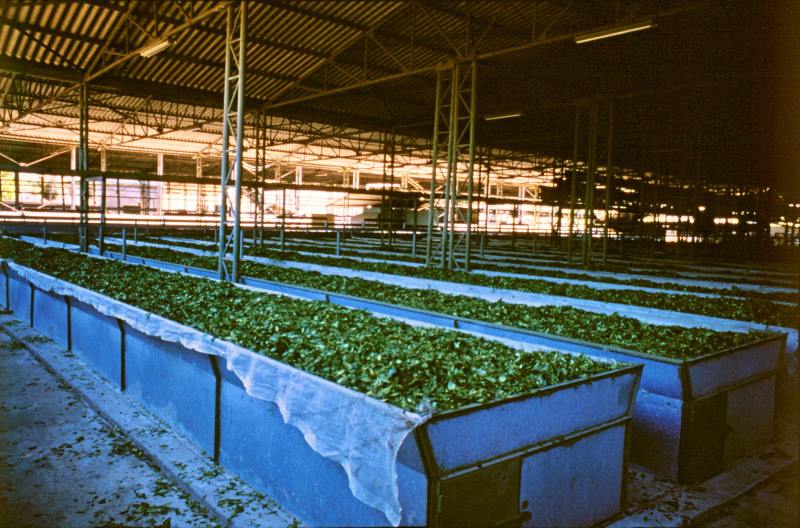
tea growing and manufacturing in Turkey by Free Photo Fun, on Flickr
How Environment Affects Withering
This is where the research seems a bit all over the place. For the most part, two main factors contribute most to an effective wither. These two are temperature and humidity. They’re important to consider because they both affect the rate of moisture loss, while also affecting the physiology of the leaves and their internal biochemical changes. Big words there.
Humidity should be a no-brainer when we’re talking moisture loss. One of the goals of withering is to lose a little bit of the leaf’s moisture so it can be easily rolled and processed. When it’s humid out, the rate of moisture-loss slows down since the ambient air is already closer to its saturation point for water. Mostly, though, humidity affects how long the withering process will take.
Temperature is the environmental variable that does more than simply affect the rate of moisture-loss. Researchers found that the Polyphenol Oxidase and Peroxidase enzymes produce the best results for later fermentation within a specific temperature range. This, is where it gets a bit he said, she said. I haven’t found a conclusive “best temperature”, but it certainly seems that anything higher than 30 Celsius…sometimes 35 Celsius is to be avoided. Then again, anything lower than 20 Celsius is also to be avoided. Below this range, the enzymes become significantly less active. Above this range, it’s theorized that they consume oxygen quicker than the leaves can absorb it. Both cases mean fewer Theaflavins & Thearubigins—less flavor.
That’s a fairly broad range. For us folks here in the US 20 – 35 Celsius translates into 68 – 95 Fahrenheit. That’s quite a range, from a comfortable temperature to a heat wave. At least this let’s use know that it’s best not to wither your leaves outdoors during a New England winter.
Finally, while it’s not necessarily an environmental variable, moisture level is important too. As mentioned earlier in this article, too much moisture and it affects the ability of your dhool to aerate and continue absorption of oxygen. If you have too little moisture, it affects the enzymes again. The Polyphenol Oxidase and Peroxidase enzymes won’t become active without enough moisture. In fact, there’s an additionally good chance that the leaves won’t take up enough oxygen for the enzymes to use if they’re too dry.
Time to Get Rolling
And that’s what we know about leaf withering. It’s a crucial step in the crafting and manufacturing of black and oolong teas. It serves multiple purposes including preparing the leaves for more effective machining, and prepping their physical status for general rolling and fermentation. Withering kickstarts the internal biochemical machinery that will transform the complex chemical-soup of the raw tea leaf into an equally complex but different chemical-soup of a black tea.
Much like the game of Othello, it takes a minute to learn, understand & use. It takes a lifetime to become a master. But don’t let that dissuade you, because even with this basic information and a high-quality leaf in hand you’ll make a pretty solid tea.
Discuss this post on our subreddit
[related-posts]
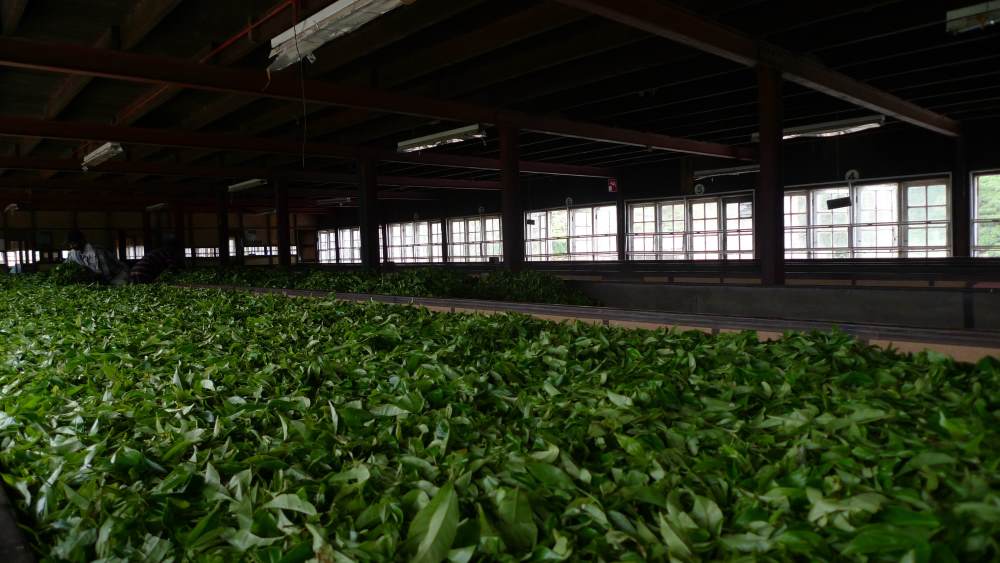
Tea Factory by Purblind, on Flickr

